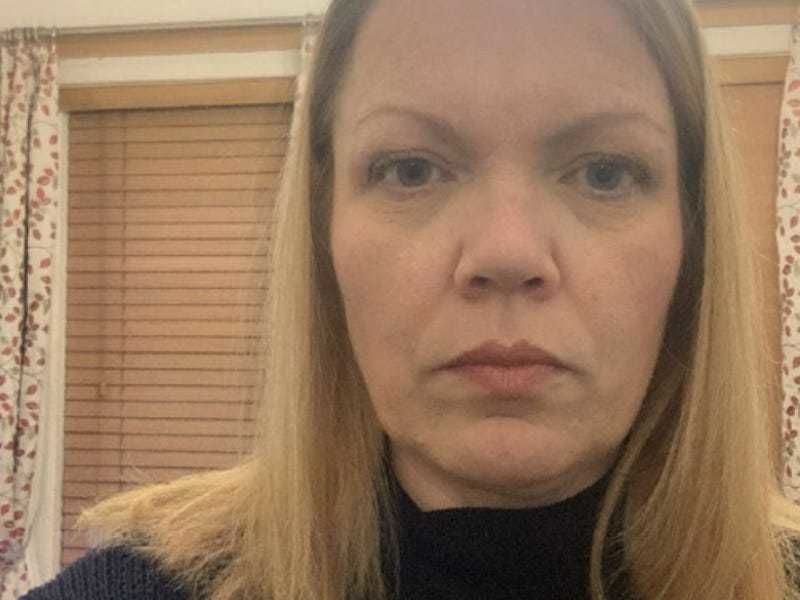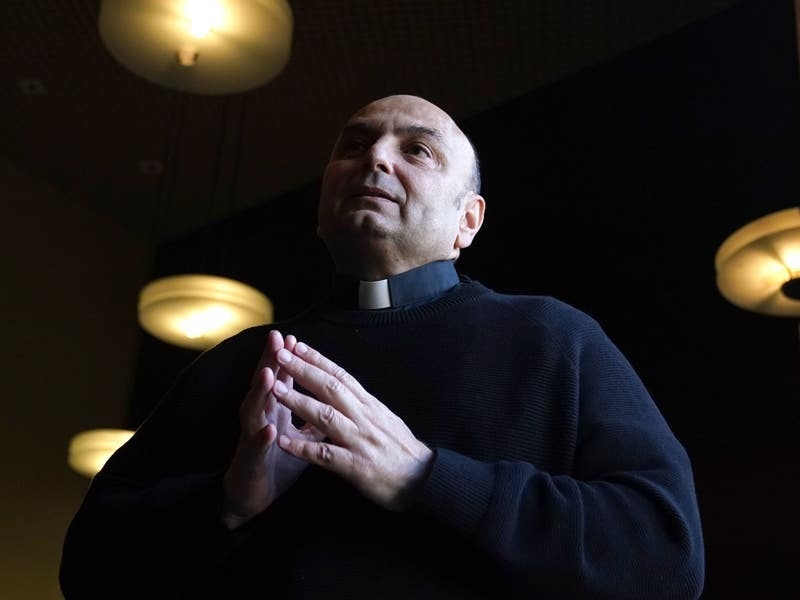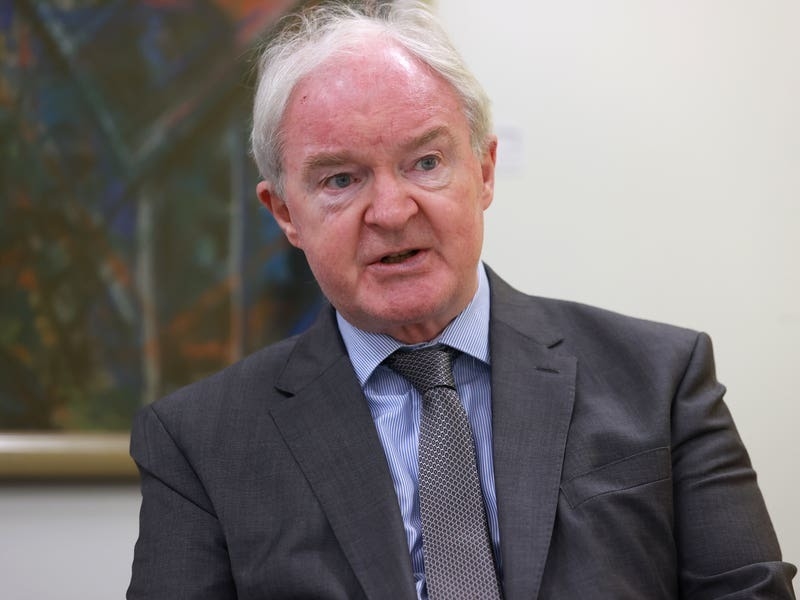As man caves go, they don’t get much better than Neil McKenzie’s workshop in Trinity.
Stripped-out shells of classic Aston Martins hang on the walls like framed stag heads in Exmoor hunting inns, naked motorbikes without their fairings wait to be revved, and mighty metal-contorting machinery sits alongside space-age looking helmets. There’s even a mini Guinness fridge – albeit in which Neil keeps only fruit juice.
Happily, Neil’s hobby – metal sculpting – dovetails perfectly with his profession and under the banner of his Art Metal firm, he uses his vivid imagination to create works of wonder and restore classic cars to their magnificent best.
He set up Art Metal in 2014 at the Springside commercial estate in Trinity. Four years on and the business is thriving. Neil has had all manner of commissions, and one of the projects he is currently working on is refurbishing an Aston Martin DB6. When that work is finished, another private owner’s DB6 is booked in for metal surgery.
The Aston he is currently working on, he tells me, is worth at least a quarter of a million pounds.
‘In the past I’ve also chopped the roof off a Bentley worth about £300,000 – because the owner wanted it turned into a cabriolet. So I altered the bodywork to turn it from a coupe to a convertible.
‘I like any cars that are handmade, aluminium in particular. If a car was handmade you know you can replicate it by hand.’
His favourite cars are classic Astons, Bentleys and Rolls-Royces from an era when the British motor industry was in its pomp.
‘I particularly like the way those cars are built, although I do also like old Ferraris and Maseratis.’
I point quizzically to the metal carcass of the front-end of another Aston DB6 which hangs above us.
‘It’s a nice bit of wall art! That’s the old front end from a previous Aston I rebuilt. I tend to have one or two hanging on the wall – they are a bit like prize trophy kills,’ he laughs.
Aside from working on vintage cars, he has also owned a couple of classics, too – albeit before their value was recognised.
‘I had a Jaguar Mark VIII and a Bentley S1. They weren’t valuable when I sold them, although they are now.’ He smiles. ‘But that’s how it goes.’
Neil is equally passionate about horsepower on two wheels and on the upper level of the workshop stand a couple of vintage examples, including a dust-clad Royal Enfield motorcycle.
‘I was 16 when I got my first bike. The Kawasaki downstairs was my Dad’s bike and the first big bike I rode, and in the past I’ve owned a Yamaha Vmax – it had a 1,200cc engine and at the time, it was the most powerful production bike you could buy.’
He tells me that his days of thunder are firmly in his rear-view mirror.
Today, Neil, who lives in Trinity with his wife Suzanne and their daughters Holly (8) and Caitlin (5), drives a work van and a Renault family car – and says he ‘wouldn’t have it any other way’.
Neil can spend between 12-14 hours a day in the workshop, depending on the amount of work he has to get through – and he tries to share the majority of his downtime with his family.
‘I do try to spend as much time at home as possible and Suzanne is very supportive. But being self-employed, if there’s a project you have to finish and that means doing 14 hours a day, you have to do that.’
He adds: ‘I’m also so grateful for the support of my parents over the years and the wealth of engineering knowledge my dad has passed on, not to mention the time he has put into some of the projects with me.’
His father Fraser (81) moved to Jersey in 1965 with Neil’s 80-year-old mum Annabell (known to all as Nan), and he worked at Queen’s Road power station as well as at La Collette. Neil even has a lathe – a precision machining tool used for cutting and shaping raw materials – from the Queen’s Road machine shop where his dad was employed.
‘I was brought up on a verbal diet of thread forms and engineering. That old lathe over there’ – he points to a corner of the workshop – ‘which was used by my dad, went to the Steam Museum before we parted with some money to bring it to the workshop – it’s a family heirloom now. My daughters are going to have to inherit it whether they like it or not!’
Neil and his brother Brian – who heads up a graphic design department and shares his passion for motorcycles – grew up in the parish of St Martin.
‘As a boy I used to make models of aeroplanes and I still do make, paint and detail them. At the moment I’m making a series of model Cold War jets at home.’
He may need to scale them up given the increasingly icy relations between Russia and the West.
In his workshop he even has the non-explosive section of a Second World War bomb.
‘I plan to upcycle it,’ explains Neil, who also has an uncanny knack of turning iron and aluminium objects into stylish furniture props.
The military theme continues as he shows me a German twin telescope (pictured on the front cover of The Weekend) which he has refurbished for a customer, on the upper level of the workshop.
‘It was used to spot incoming military aircraft. People have a lot of seaside properties here and these have an incredible range on them.’
Neil says his own sights were not actually set on a career as a metal artist or in the automotive industry as a young man, but – needing a job at the age of 18 – a summer stint washing hire cars took him down a more promising avenue.
‘I did my A-levels at Hautlieu and after that, I really didn’t know what to do, so I got the summer job washing hire cars. That ended up running beyond the summer and the man who owned that business, Ted Robinson, also owned Panel Craft in Kensington Place – which at the time was Jersey’s only Porsche-approved body shop.
‘I got a job there as a panel beater repairing crashed cars. Back then the Porsche 911 was known as the “Jersey Capri” – everyone seemed to have one – and many were crashed and needed repairing.
‘I learned old-school techniques like lead loading – smoothing out metal seams in bodywork – and after that I worked for Le Riche Automobile Restorers in Trinity for ten years.’
A wish to experience life further afield took Neil to the Emerald Isle at the age of 30.
‘I was getting cabin fever in Jersey so I got a job at a traditional ironworks in Dublin doing a lot of blacksmithing and bespoke metal work.
‘We had a lot of big government contracts and we also did work on singer Enya’s castle and U2 frontman Bono’s house – both of whom are very private people.
‘It was like going to college for five years but also getting a wage for it because I learned so much working in Ireland.’
Neil not only increased his knowledge of his craft, but he also met his future wife over there.
‘I met Suzanne on St Patrick’s Day in a nightclub. We hit it off immediately and 12 years and two children later, here we are.’ He grins. ‘I think I’ll hang on to her.’
He started his own bespoke metal work and classic car restoration business in County Carlow, Ireland, but says that in hindsight, the timing was wrong.
‘I opened the business just when Ireland’s economy had gone over that boom time and it was a downward spiral with the credit crunch. After five years it became too difficult to continue.’
Neil and family returned to Jersey via Lymington, Hampshire, where he worked for one year for a classic car restorer – and ‘honed his skills’ in the process.
In 2013 he was back in Jersey, but a vintage car refurbishing business he subsequently co-founded in the Island ‘didn’t quite work out’ and he went on to set up Art Metal as a solo enterprise.
He says he is lucky to be able to call on the help of ‘good friends’ who help out at the workshop, and he also enjoys collaborating with artists from outside Jersey.
To that end, a few years ago Neil constructed a bespoke, stainless steel stereoscopic pair of fixed binoculars beside Lough Lannagh in the western region of County Mayo in Ireland, for Paris-based Irish artists Anne Cleary and Denis Connolly.
The binoculars juxtapose two different high-definition films of the landscape for the left and right eye.
‘Anne and Denis used augmented reality technology inside them. You can look through the binoculars and see, for example, an autumnal scene in one eye and a nature scene in the other.’
His association with Anne and Denis also led him to create a collection of meta-perceptual helmets – futuristic-looking metal headgear which were exhibited at Tate Modern in London last month.
Inspired by the research of neurologist Michael Land, the helmets were designed and created by Neil, while Anne and Denis took care of the optics. They allow the wearers to experience the world from the perspective of, among others, a giraffe, a horse and even a hammer-head shark.
Neil, who constructed the first batch of helmets in 2013, went over to London to see his handiwork on show as part of the Self-Impressions exhibition at the Tate a fortnight ago. ‘I’d never been to Tate Modern before and it felt superb to see the helmets on show – it’s a real buzz to see your own work displayed.’
In the past, Neil has even built a sculpture of the famous DeLorean model car from the Back to the Future film.
‘Another Irish artist, Sean Lynch, commissioned me to build a DeLorean. I built it as a one-to-one scale sculpture of the car and it was displayed in different ways in some significant galleries in Ireland, London, Mexico and Germany.’
He has also made several trophies for Waterford Crystal – the company renowned for their luxury cut-glass products – and while based in Jersey, he completed a major permanent exhibition for the ‘Wild Atlantic Way’ – an Irish tourism route along the country’s west coast.
‘That was again in collaboration with Anne and Denis,’ adds Neil, who created a series of ten permanent installations along the route, including a “photoscope” – essentially a telescope containing an illusory image of British aviators Alcock and Brown together with their plane – to mark their transatlantic flight of 1919. No physical trace remains in the wild landscape, even though the daring duo crash-landed in County Galway.
‘All of those permanent installations were fabricated here in my workshop in Trinity and I went to west Ireland to install them,’ explains Neil, who is planning to construct a further five meta-perceptual helmets – ‘on a different series of creatures and concepts’.
He adds: ‘Your only limitation is your imagination – and your budget. There’s just not enough time in the day to build all the things I want to.’
What, I wonder, would he build if he had unlimited time and money?
‘I would like to build myself a car to my own design, something very art deco with 1930s styling, something really beautiful to look at.’
Neil clearly has an eye for art and not just from a metallic perspective. In his spare time he installs sculptures, lighting and hangs paintings for CCaSM Gallery in town.
Still, leisure time is a luxury for Neil.
‘That’s why I try not to watch telly, although occasionally there are some things that have to be watched, like Game of Thrones.’
This would explain his other interest – designing fantasy metal armour.
So does he feel that his job is the perfect combination of work and hobby?
‘Yep, I love what I do and it’s never a problem to come into work.’






